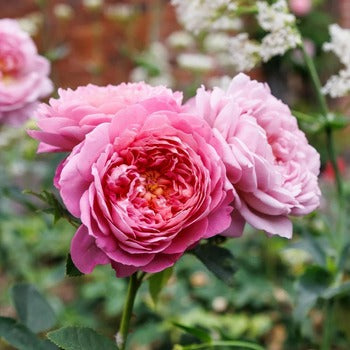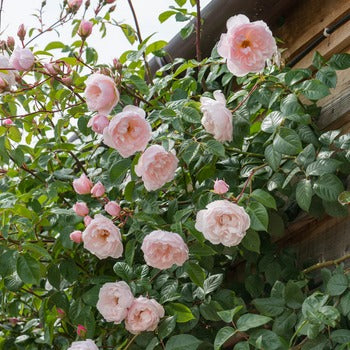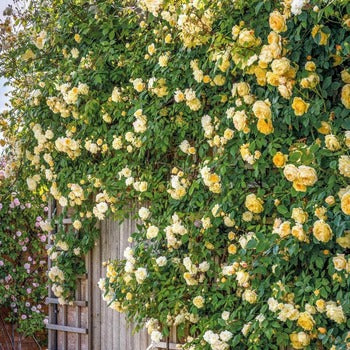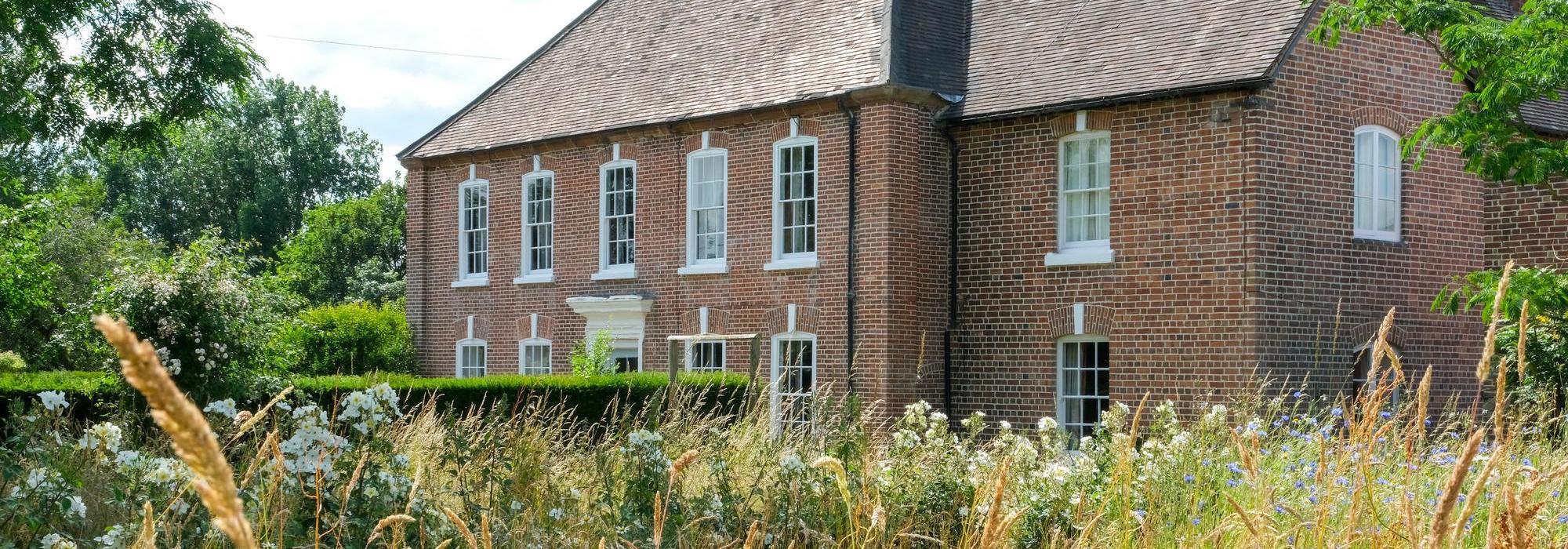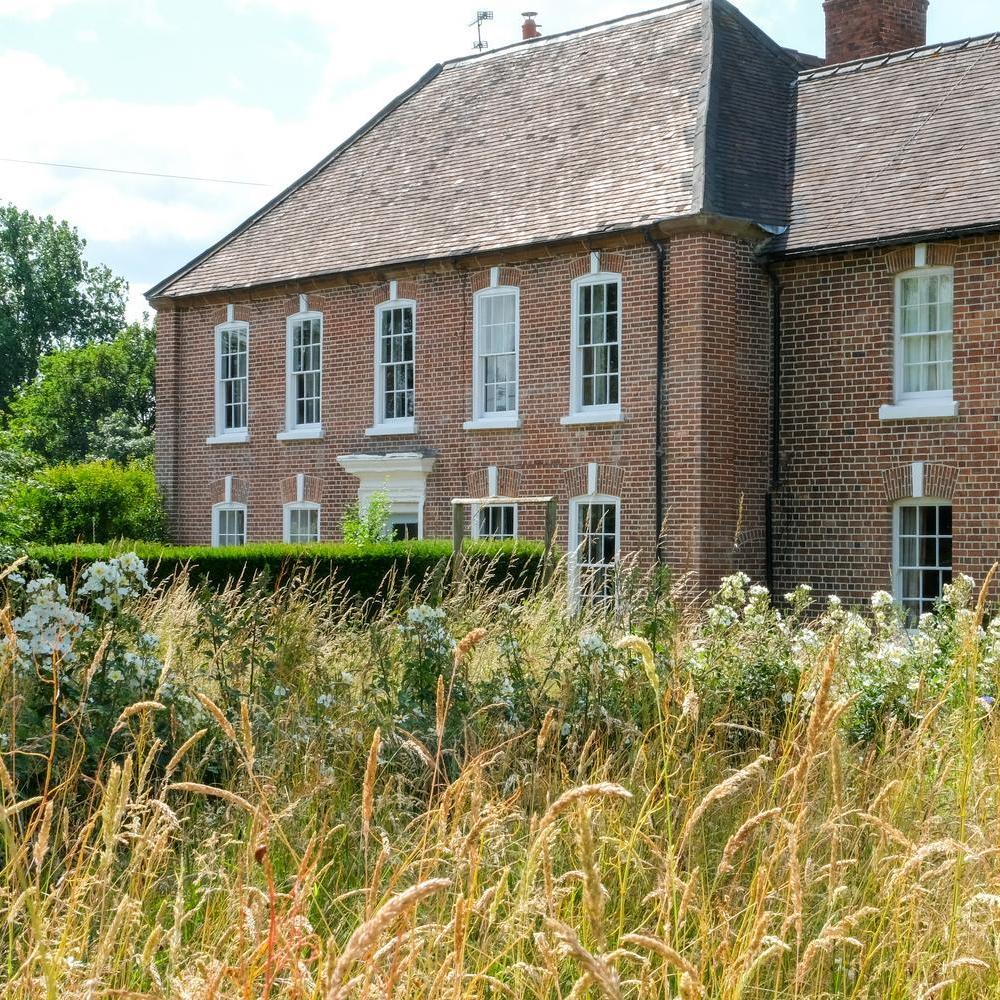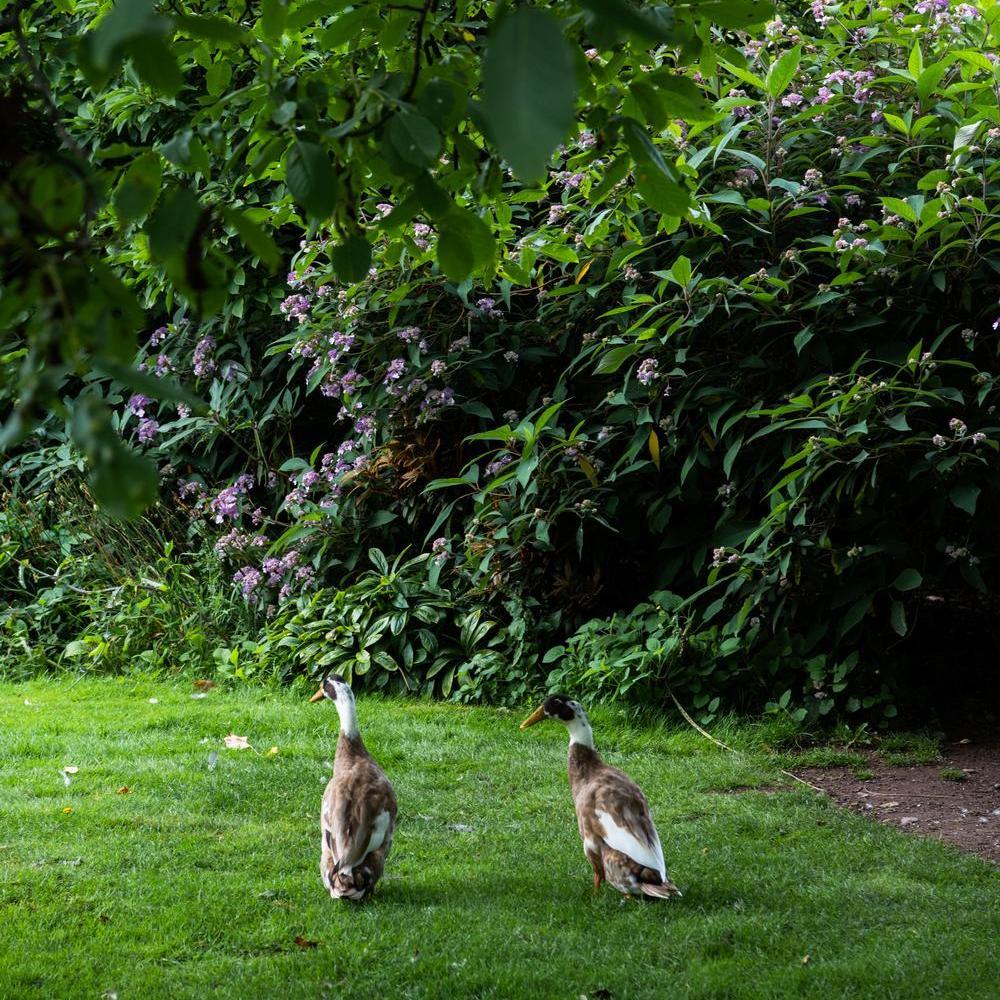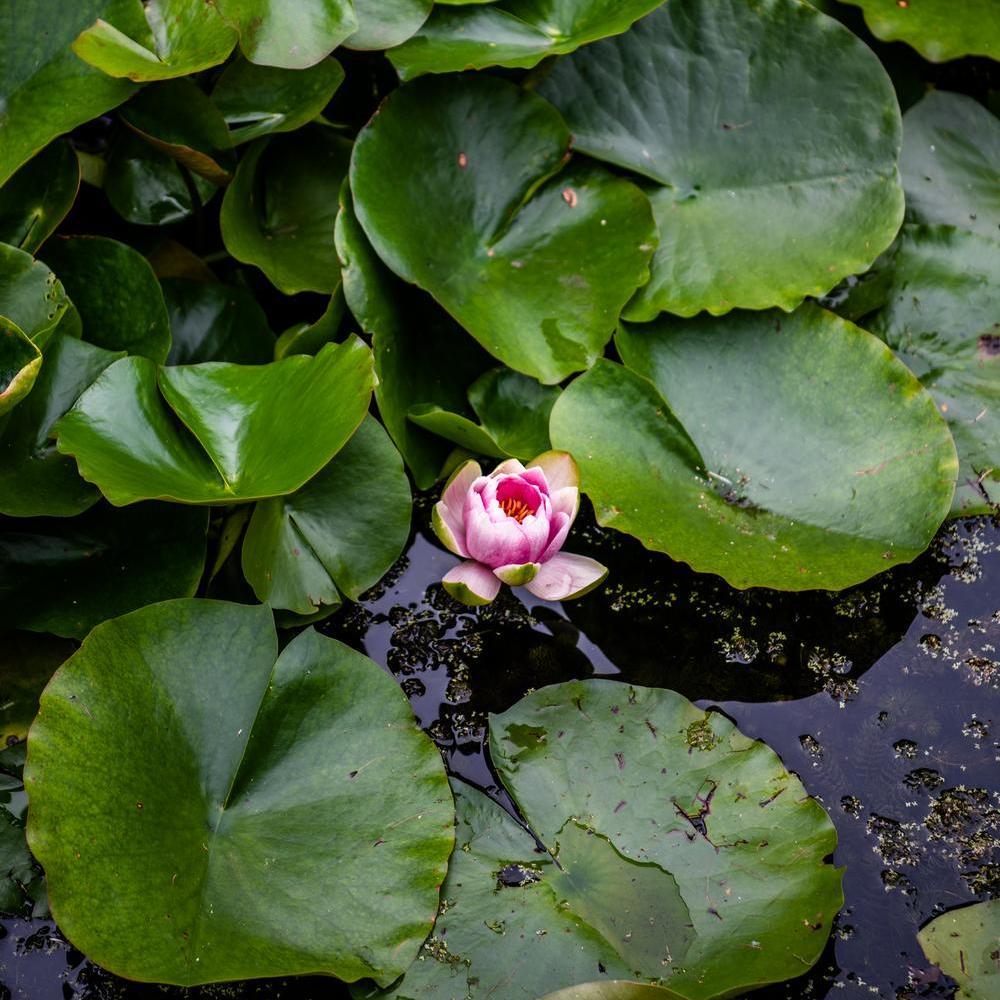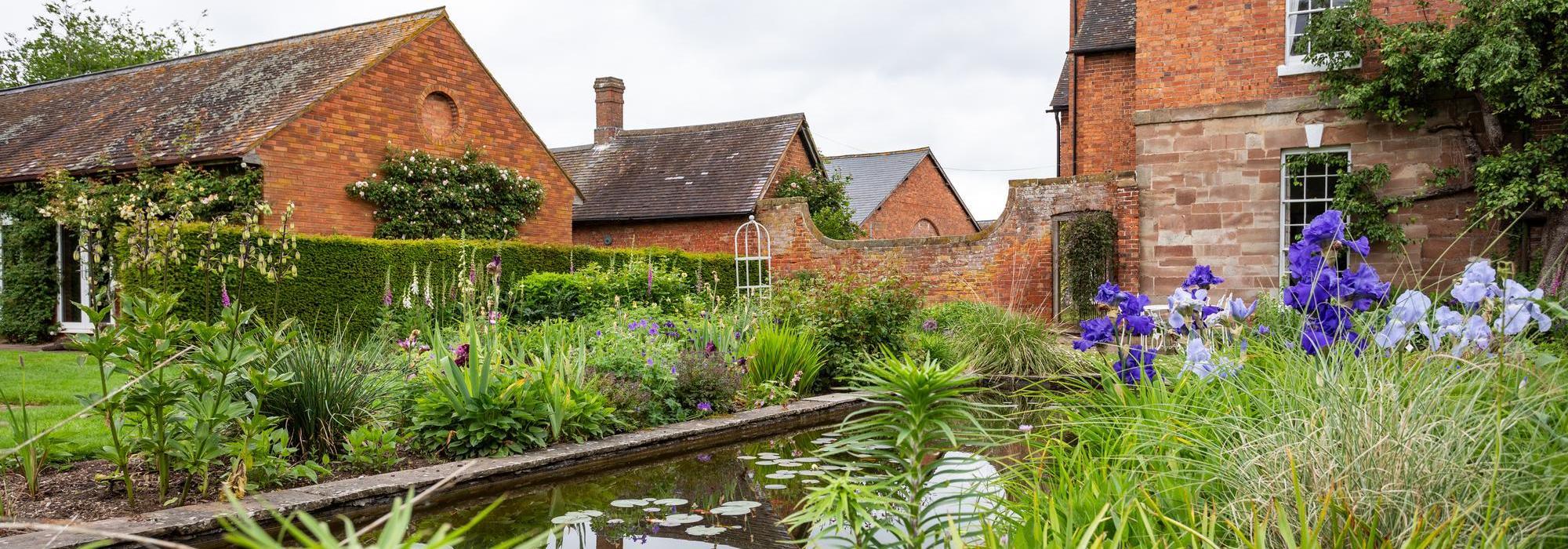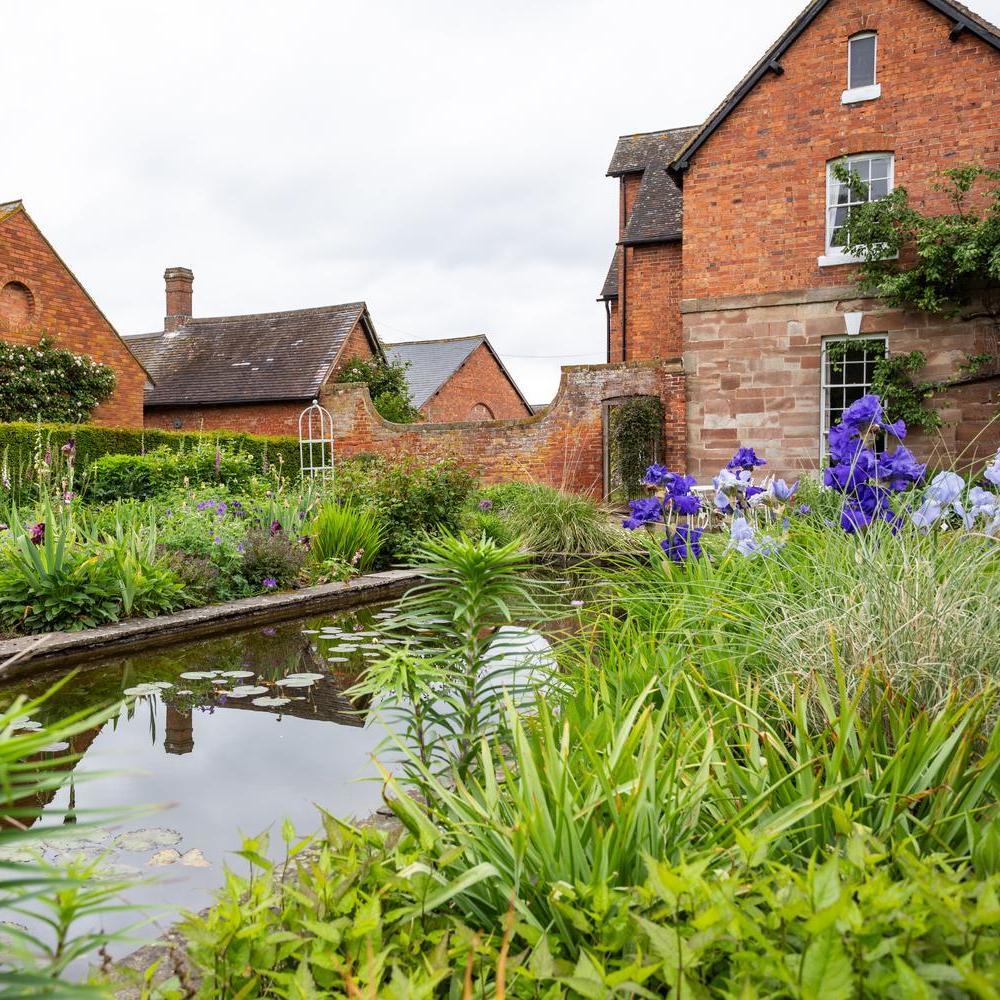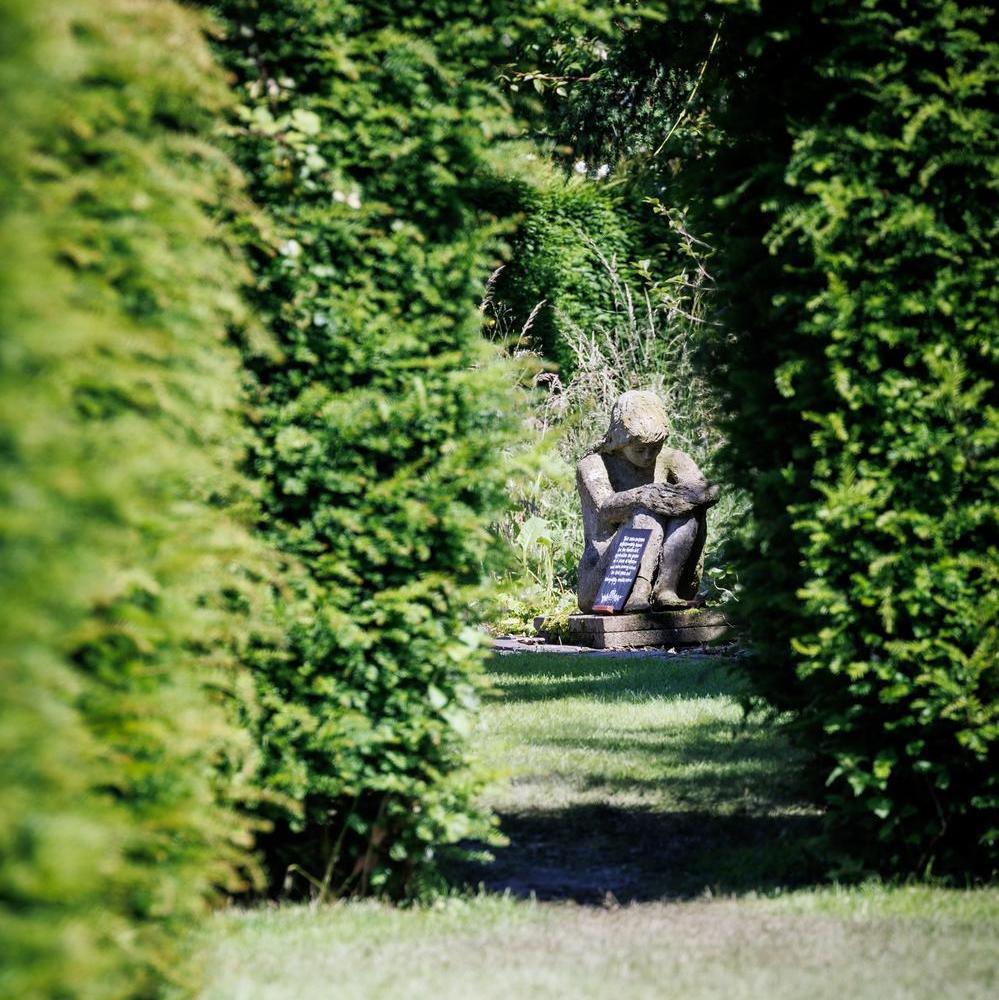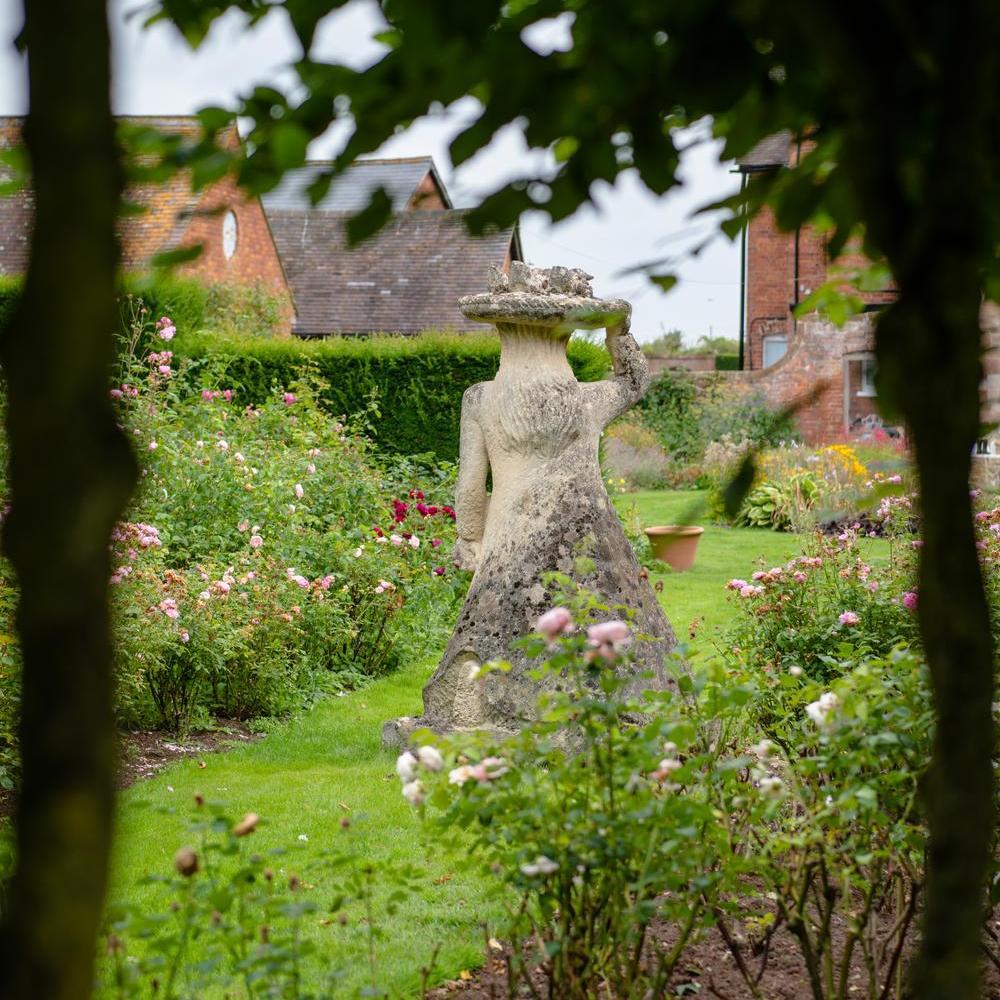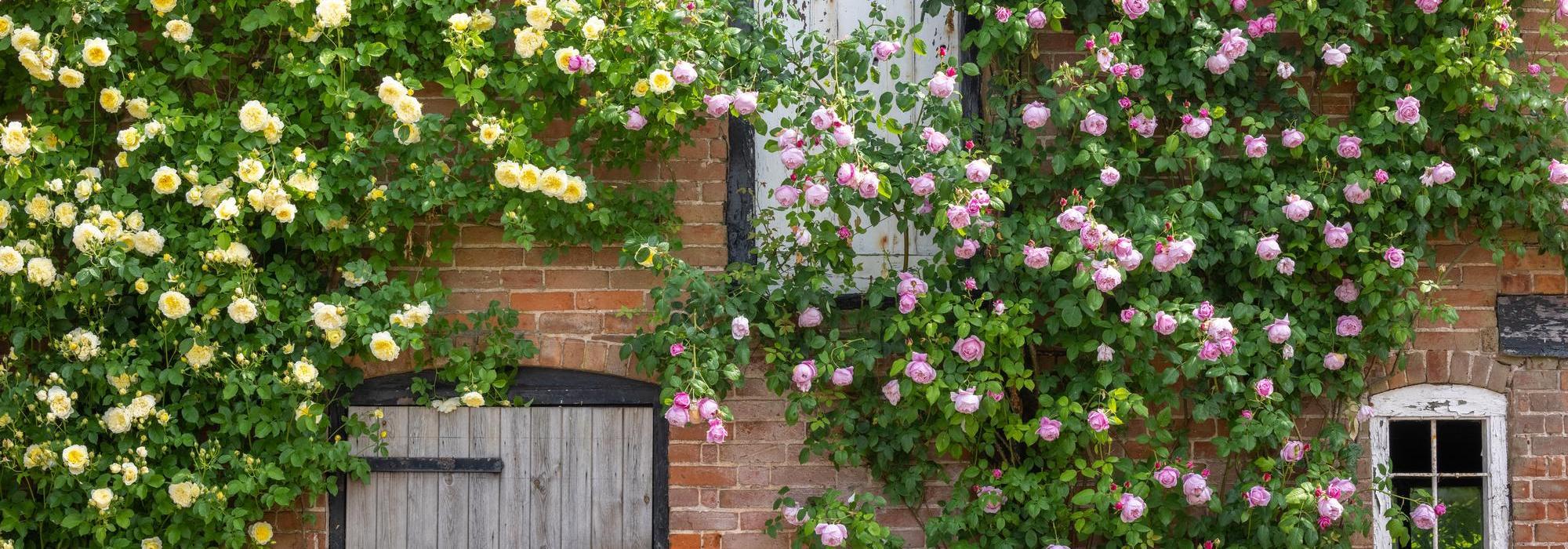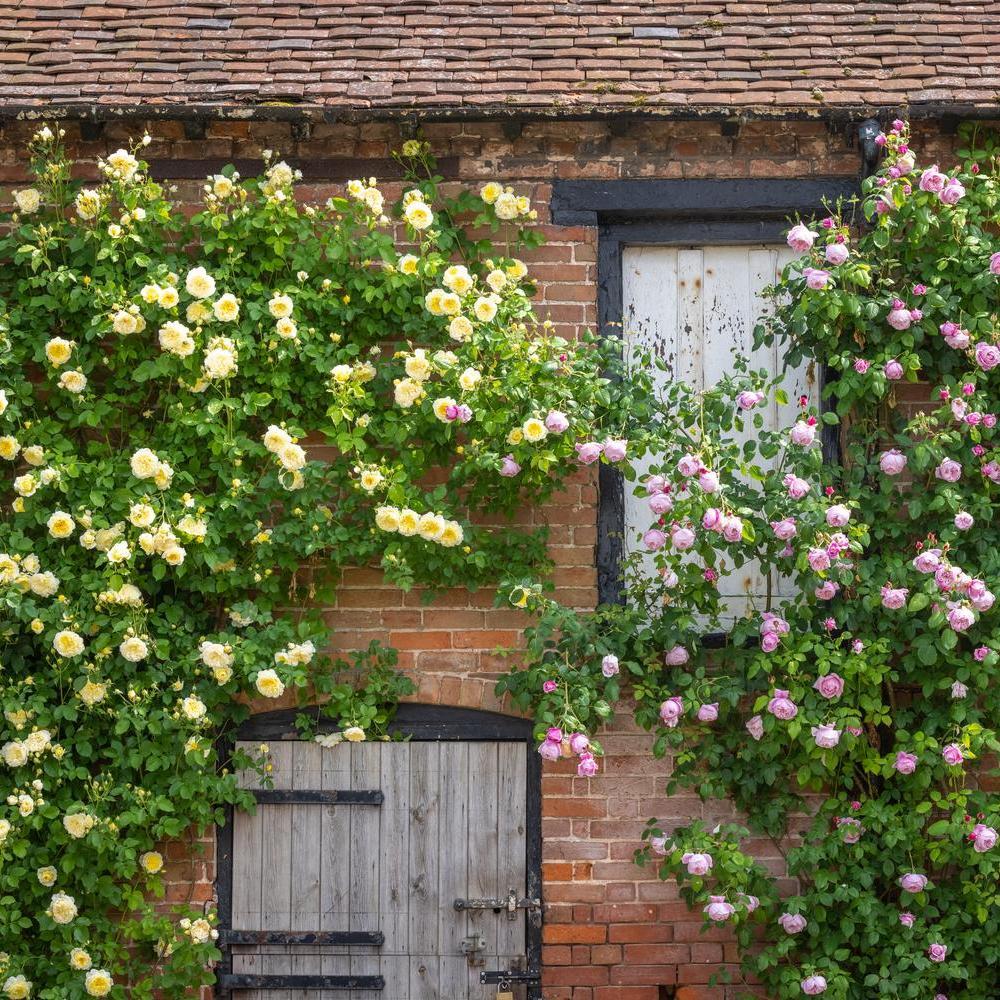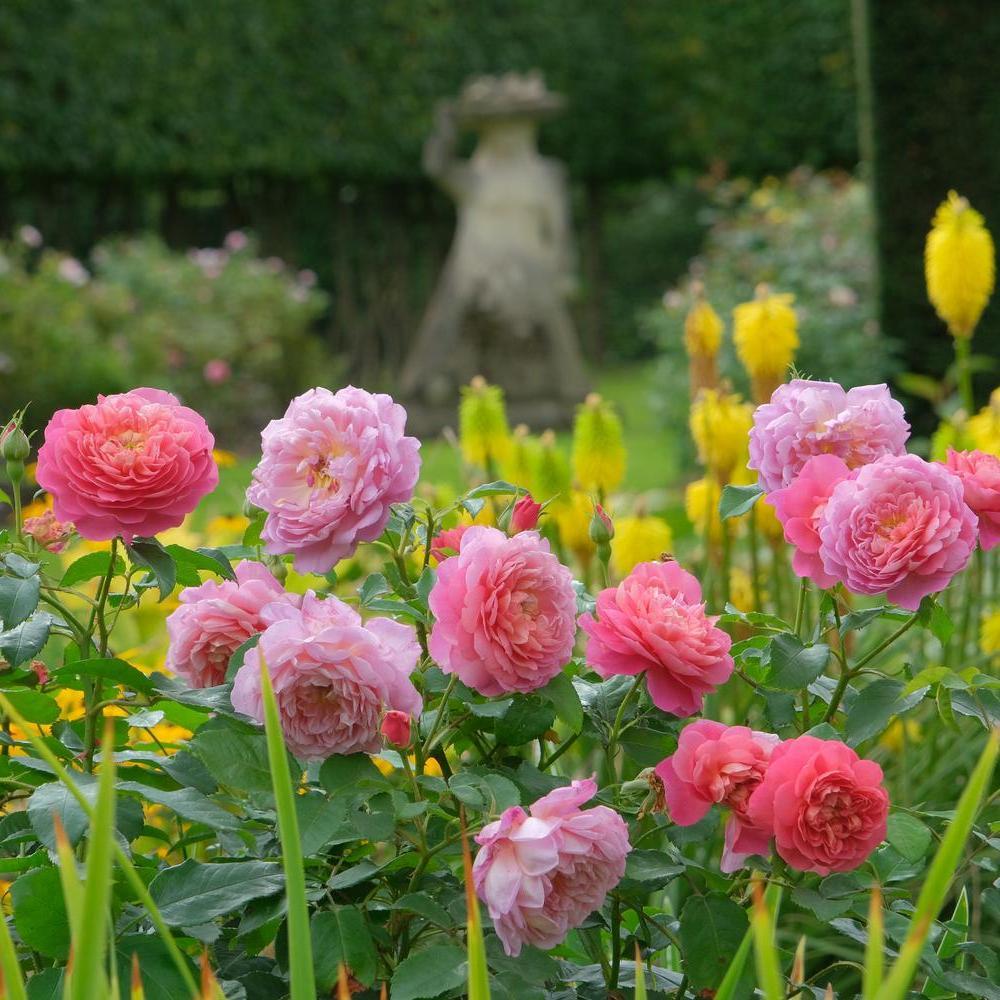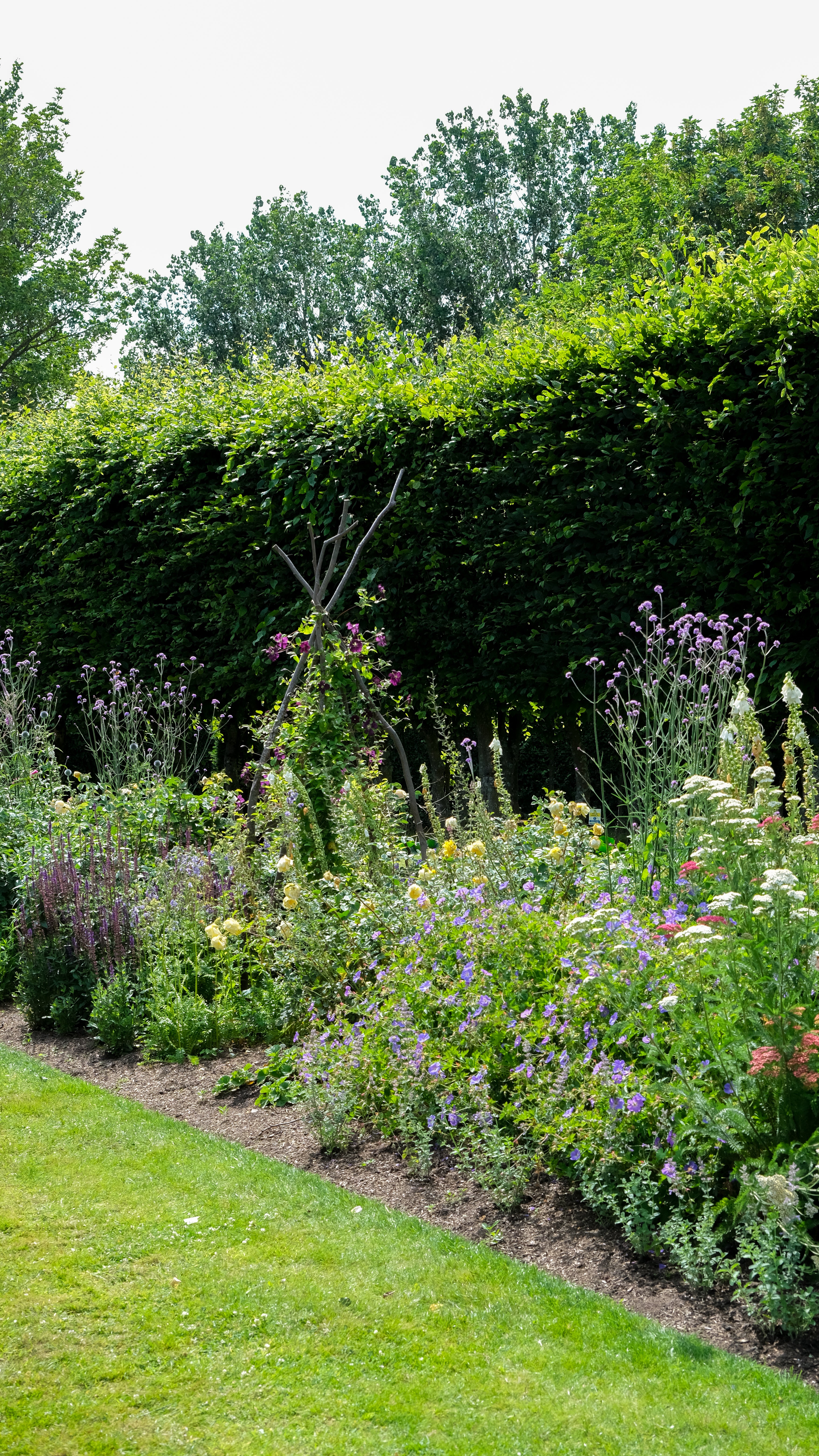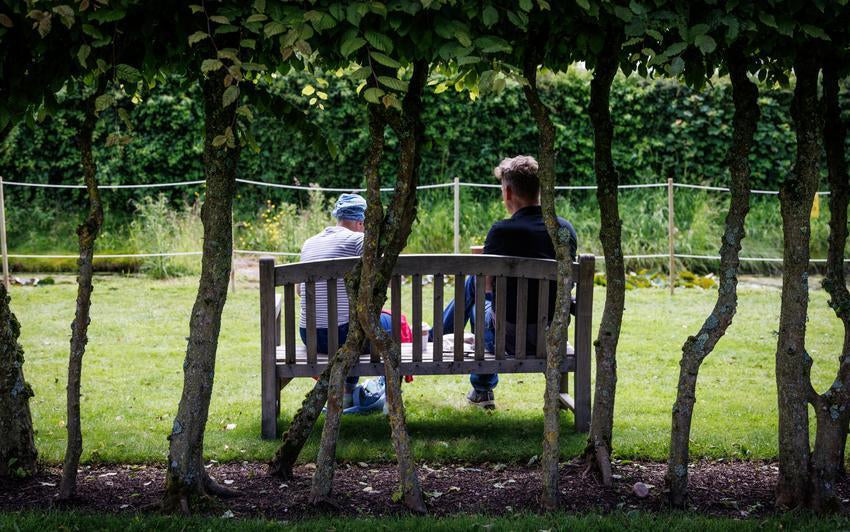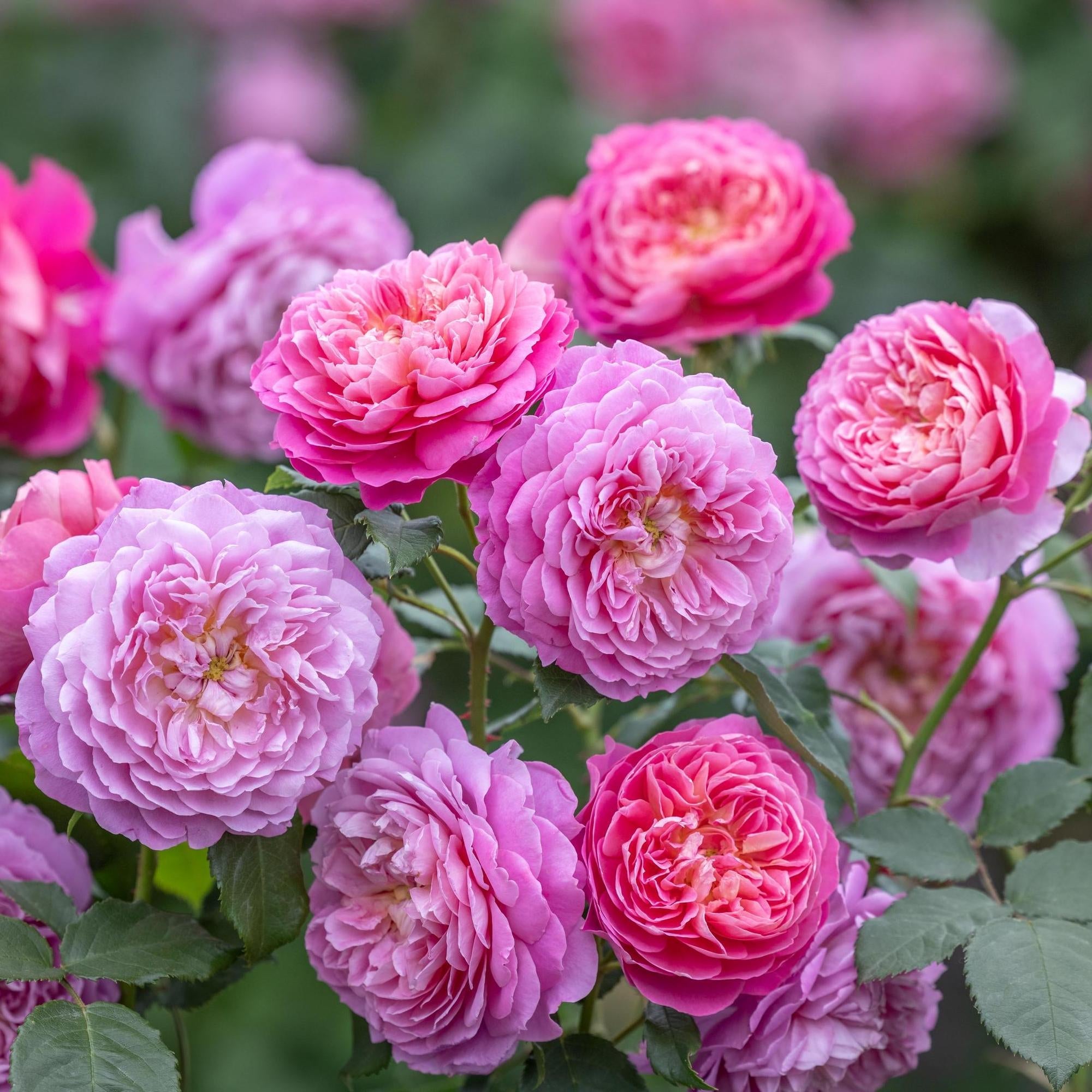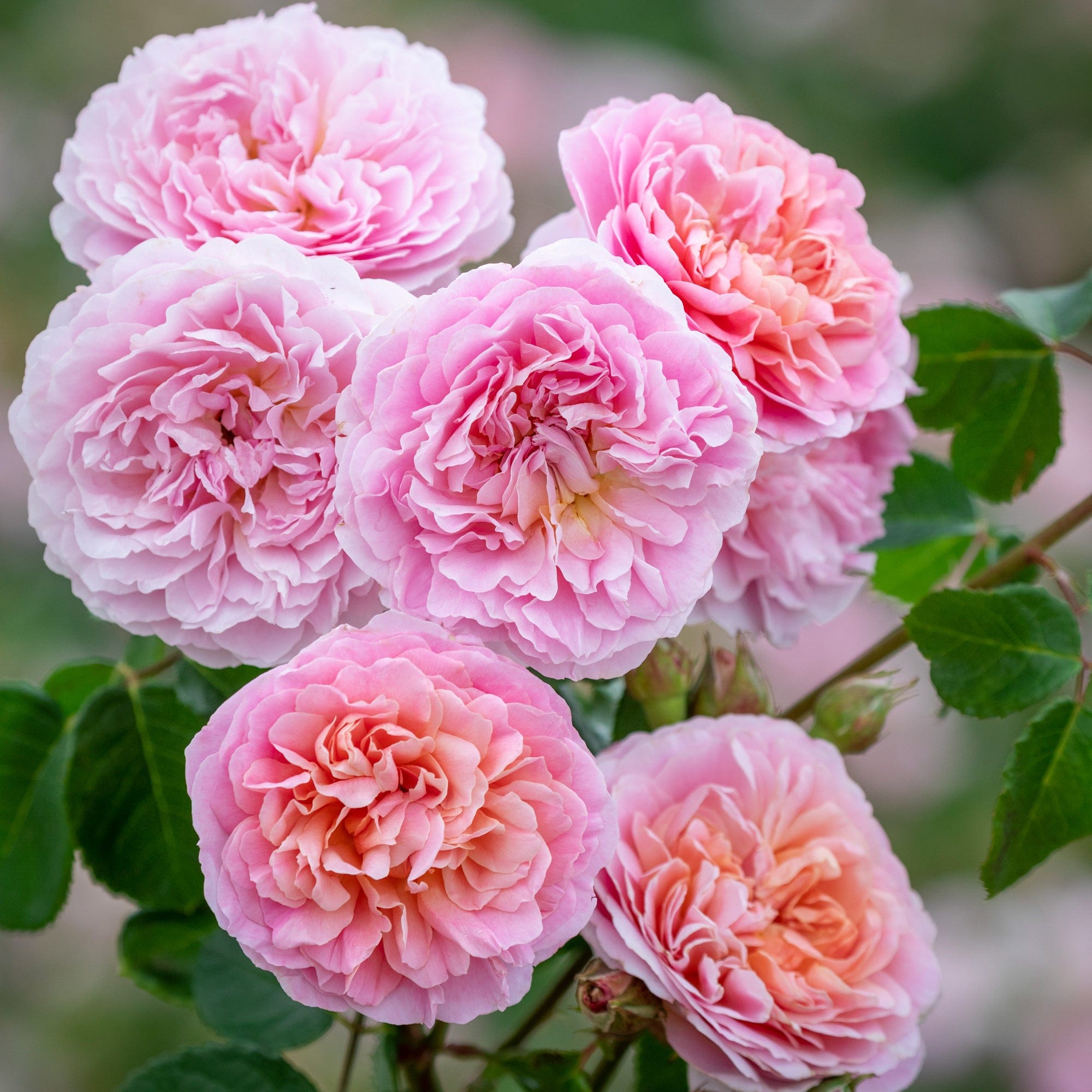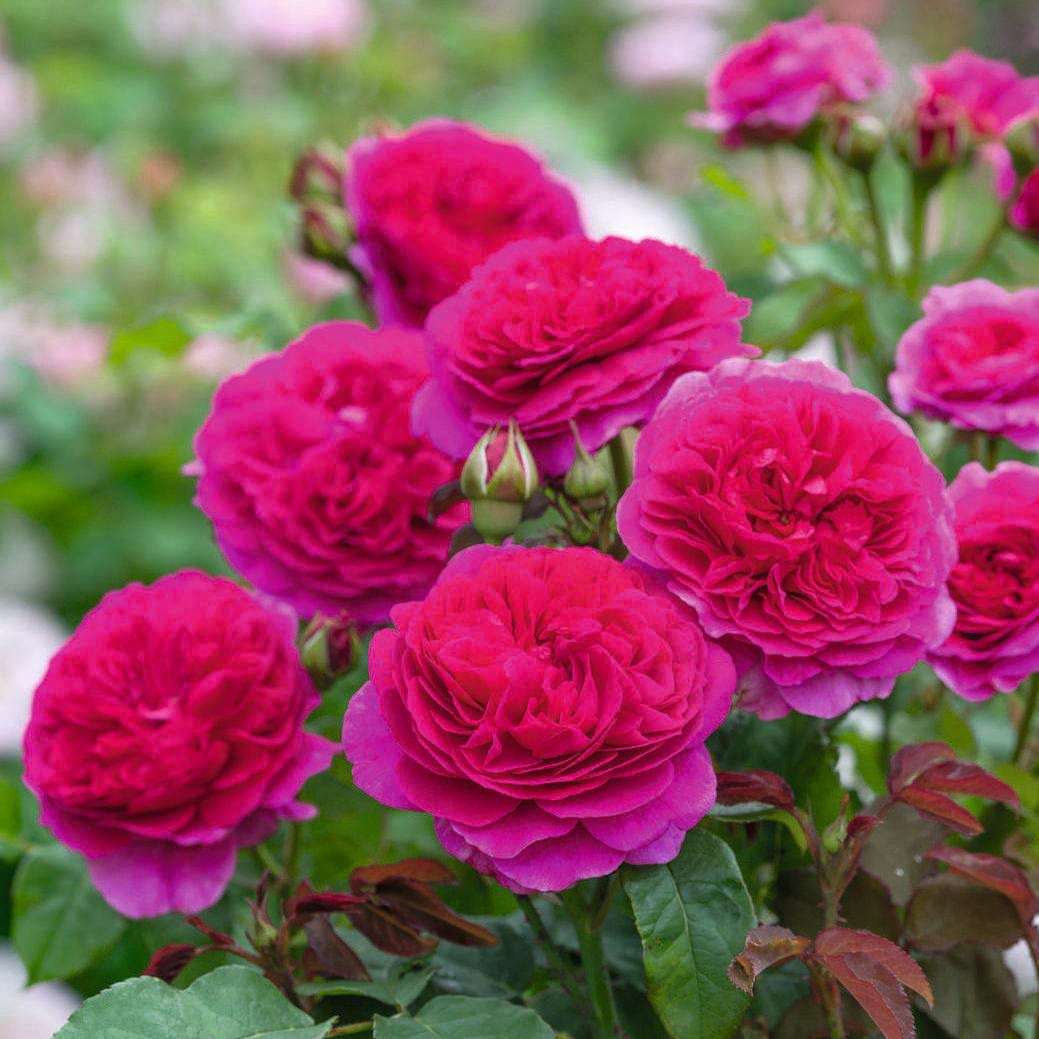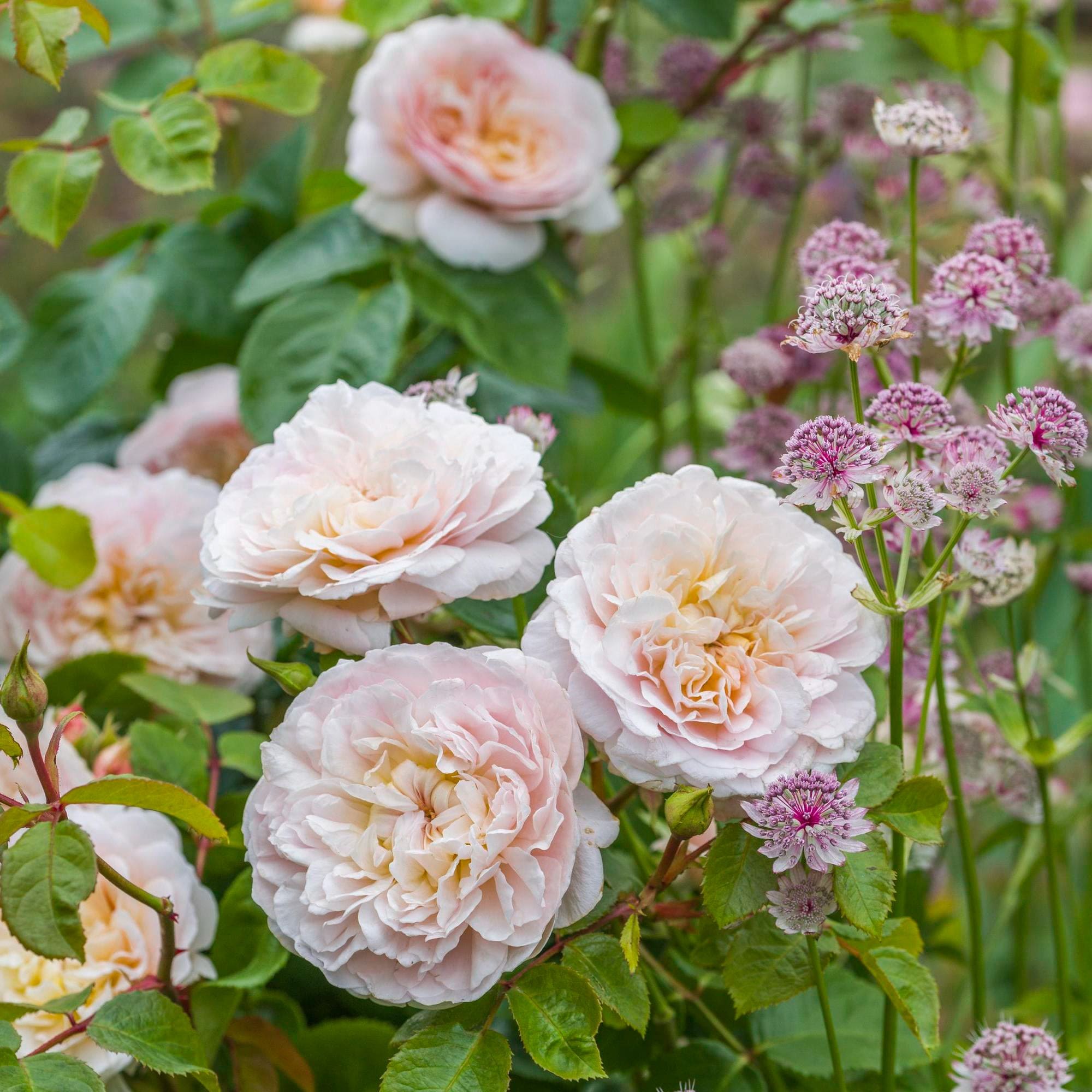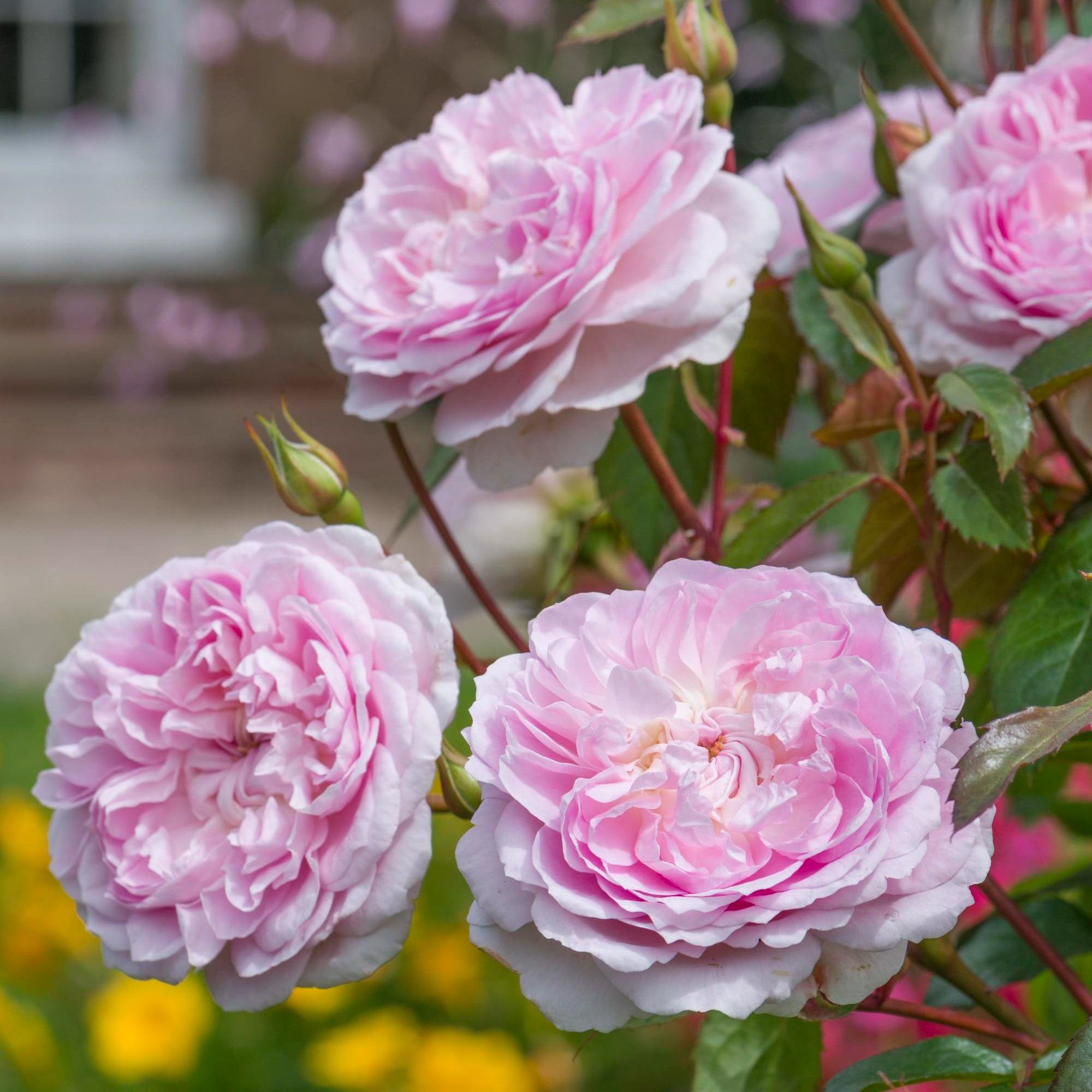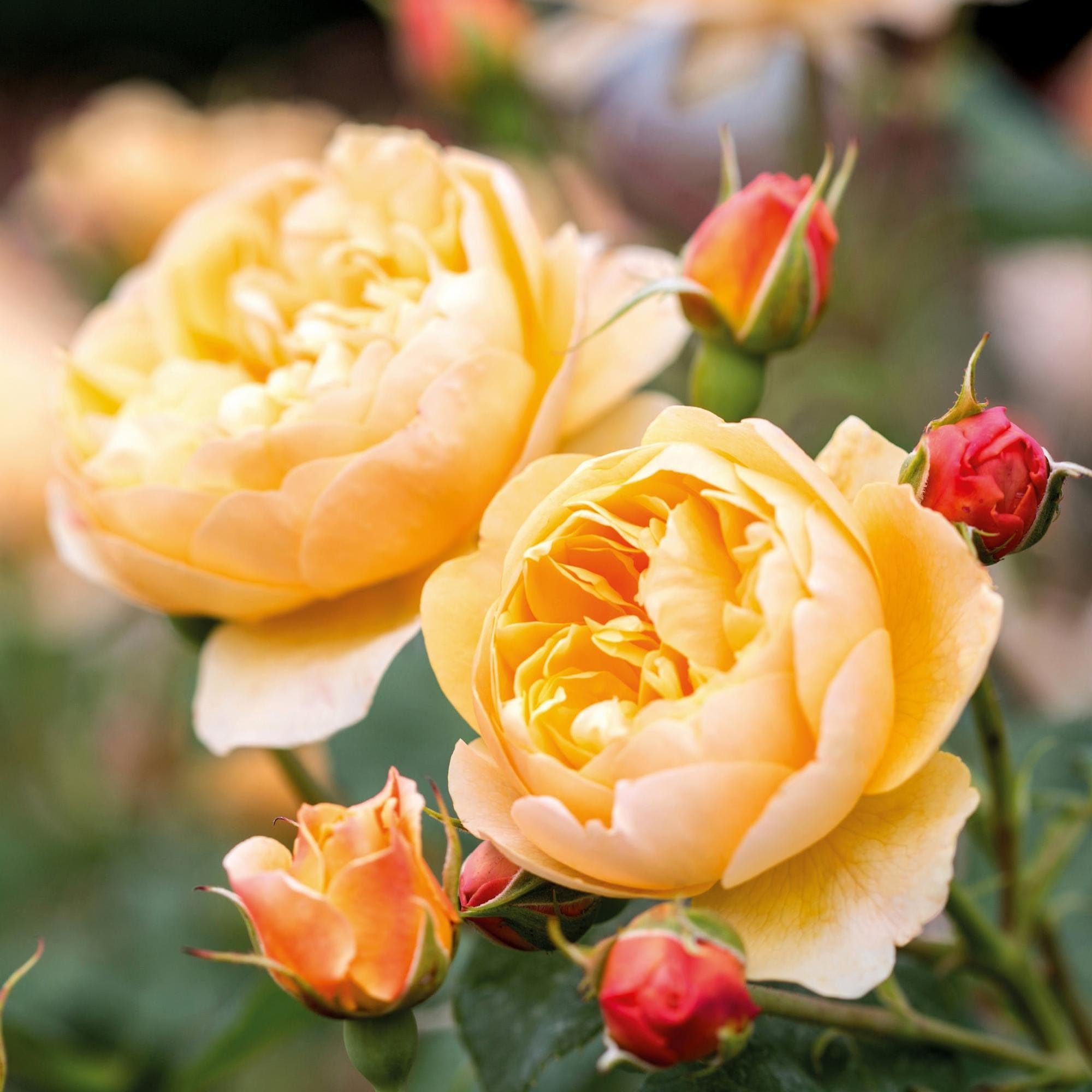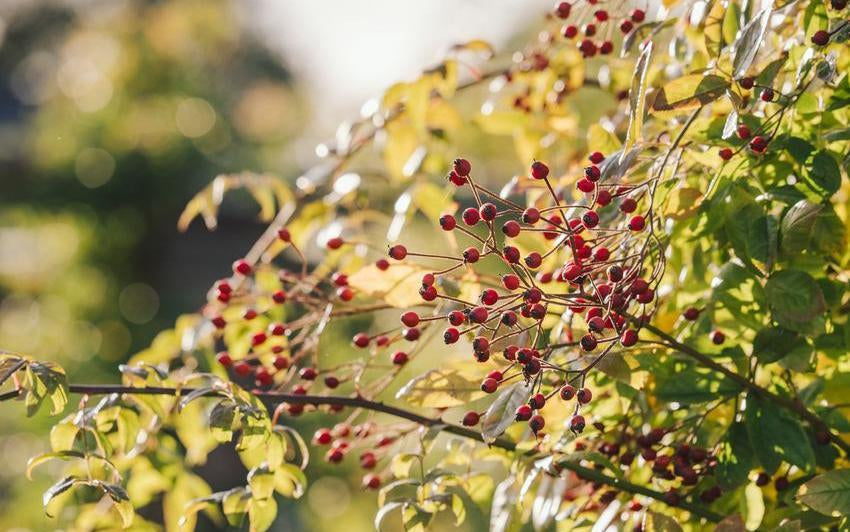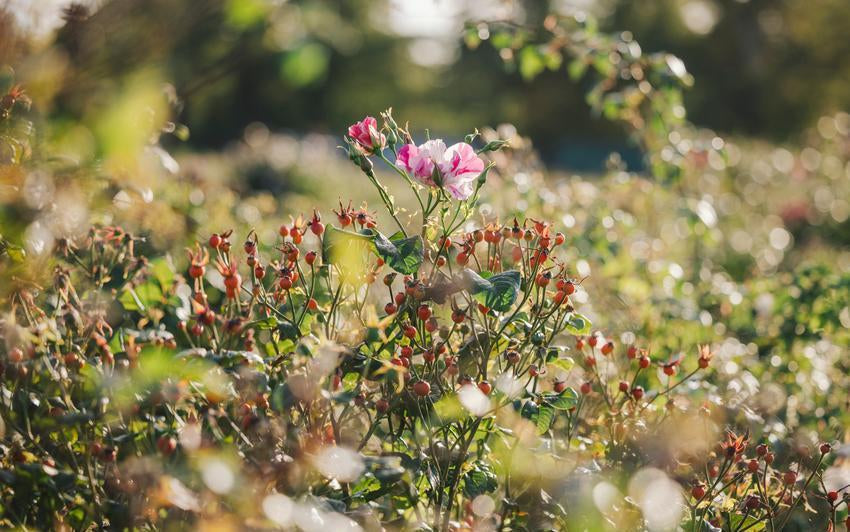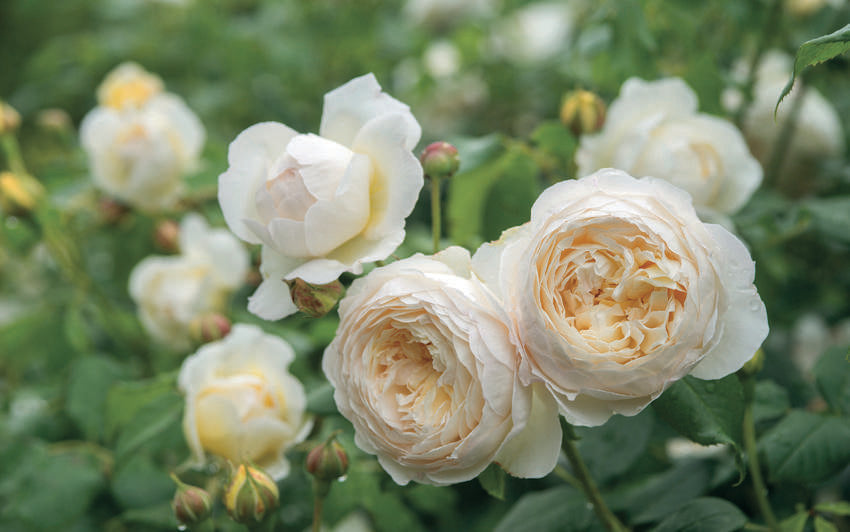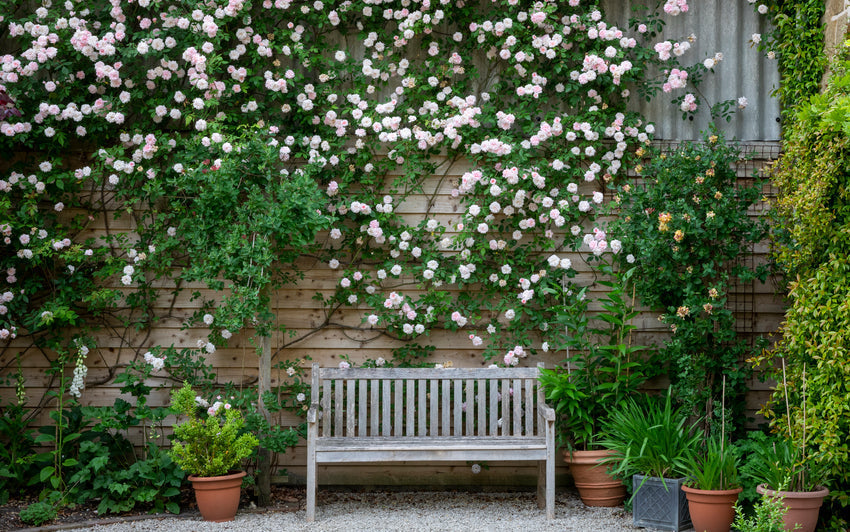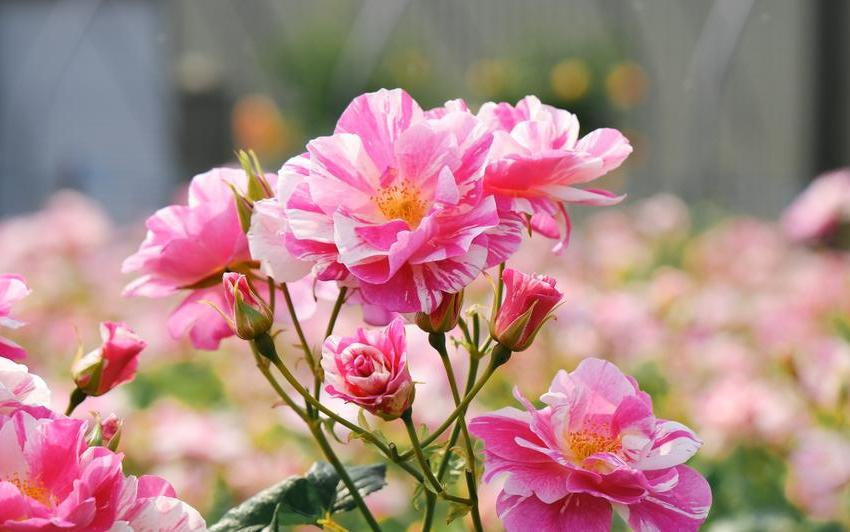A Garden Seen Through the Kitchen Window
The private garden of David C. H. and Pat Austin at Bowling Green House
From the kitchen window of Bowling Green House, the view is quiet but alive. Beyond the old glass panes, a narrow canal runs still beneath the branches of the weeping ash, its surface shifting with light and the soft wake of ducks. Native reeds and waterlilies fringe the banks, creating a scene that feels more discovered than designed. David C. H. Austin had it dug after admiring something similar in a friend’s garden. Here, it became the garden’s steady centre, a reflective ribbon running through the planting, anchoring moments of calm.
This is not a showpiece garden. It does not ask to impress. Instead, it draws you in. Walk through the gate and you step into something personal, a garden shaped not by trend or symmetry but by instinct and affection. Foxgloves lean into fennel. Lupins push up among low swells of Geranium ‘Rozanne’. Catmint spills over the edges and roses thread their way through trees and climb hazel wigwams. There is structure in the clipped hornbeam and arched pathways, but it never feels rigid. The garden moves. It catches the breeze. It breathes.
For many years, this was as much Pat Austin’s space as it was David C. H. Austin’s. A sculptress of imagination and tireless creativity, she approached the garden with the same intuitive energy she brought to her work. Nettles were left for butterflies. Plants were added not to match a plan, but because they felt right in the moment. Before her passing, the garden grew with a kind of wild grace. Afterwards, David C. H. Austin replanted with great sensitivity, bringing a sense of calm while allowing her spirit to remain. It can still be felt in the looseness of the borders, the unexpected pairings, and the way a foxglove might appear exactly where it should not.
Pat Austin’s sculptures are woven through the garden like chapters in a story. Some are prominent, others half-hidden beneath foliage. Among them stands one of her most memorable pieces, the statue of a Greek lady with ducks in her hat. Inspired by a scene she witnessed while travelling, it captures both her humour and her deep attentiveness to the world. Elsewhere, lions stand watchfully, gargoyles grin from corners, and resin girls lounge as if resting in the shade. Each sculpture speaks to her hand and her vision, a reflection of long hours spent working into the night while the rest of the house lay still.
There are details that reveal themselves slowly. The orchard of medlar and apple trees. The barn that once held Hereford cattle. The canal that once formed part of the moat. The monkey puzzle tree that once stood at the garden’s centre and the pool added in 1985. All of it layers the space with memory, not just of what was planted, but of what was made and lived.
And through it all, there are roses. Over thirty-five varieties, some English, some not, all chosen and arranged not for display but for how they move, how they catch the light, how they speak to the plants around them. It was here that rose breeding took root. Pollen jars were once stored in the kitchen cupboards, and the earliest catalogues were written at the dining room table. That closeness between home and horticulture can still be felt in every part of the garden.
Now open to visitors at weekends, this private garden offers something quite different from the bustle and colour of the formal rose displays beyond. It asks less of the eye and more of the spirit. A garden not just to be seen, but felt. Still, reflective, and filled with memory - it offers a slower kind of beauty.

